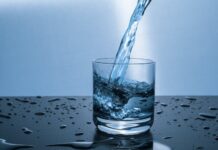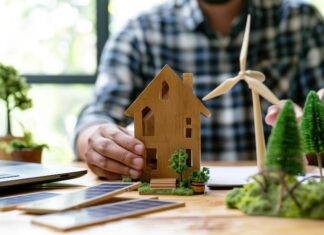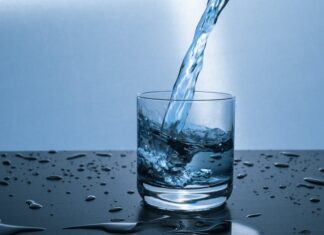Any type of water damage can do a lot of harm if nothing is done to address the problem. Be it from a water leak or flooding, water or excess moisture may be challenging to clean up after a water disaster. Also, the damage it leaves behind can be stressful to deal with and repair. For the most part, one of the unfavorable results of water damage at any home is the increased likelihood that mold will start to develop in such properties.
Luckily, San Diego homeowners can take measures to inhibit mold development after a flood or leak. Also, knowing how water-damaged areas become infected with mold may help keep your house safe and prevent potential health hazards.
In this article, you will learn what causes mold and what you can do to stop mold from water damage.
What Causes Mold?
Table of Contents
Lack of Ventilation
Mold may quickly spread across a house with improper ventilation. If there isn’t enough airflow, warm or damp air pockets may form, which is a perfect condition for mold growth. So far, when water and steam evaporate, they form humidity. For this reason, it is necessary to vent the humid air outside to keep the relative humidity stable.
Leaking Pipes
Pipe leaks are the most prevalent source of moisture that may lead to mold. Hidden leaks, such as those within a wall or above a ceiling, are the main cause. So far, there is a chance for mold growth when a leaking pipe is undetected.
Leaking in Your Roof
The presence of mold in the attic can go undetected for a long time if the roof leaks. This is quite similar to the leaking pipes mentioned above. For this reason, always scheduling a frequent attic inspection is necessary to detect potential leaks. Also consider installing Crawl Space Insulation to make your life easier.
Flooding
Excess water will soak the inside of your home for a considerable time after a flood. This, of course, makes mold issues almost unavoidable. Also, there’s a chance that drying out might take several days. Thus, the potential for mold development is relatively high.
Foundation Issues
Keep an eye out for water pooling near your home’s foundation. This might cause water damage leading to mold growth as water seeps through the home’s foundation.
How can homeowners test for mold after water damage?
Often, it might be challenging to discern whether the mold you think you’ve discovered is indeed mold and not simply dirt. Thus, a professional water and mold remediation service must inspect your San Diego home for mold.
On the other hand, you may use a simple approach to check for mold in walls and other locations. Mold can develop in different areas. And unlike dust, mold is a living thing. This indicates that mold has a highly distinct reaction to bleach in contrast to dirt, which has a neutral response. For the most part, try to put the moldy item in bleach and see what happens.
If the areas of darkness persist, it’s likely dirt. However, if it disappears fast or lightens in color, it indicates mold’s presence. You may also purchase mold testing kits in the comfort of your home, which is especially useful for evaluating more complicated situations.
Where to Locate Hidden Water Damage
After a flood, a leaking roof, or a busted pipe, inspecting the property for water damage may seem obvious. However, homeowners must know that water may seep through some hidden part of the house. And if not properly inspected, it can cause damage to the structure. So far, always check hidden water damage around the following:
- The Chimney
- Under House Siding — Behind Exterior Faucets
- Around Windows
- Below Exterior Door Frames
- Inside the Walls
- Underneath Home Appliances
- Behind & Beneath Indoor Plumbing Fixtures
Luckily, homeowners can stop mold growth by taking prompt action following water damage.
But how can homeowners prevent mold growth after water damage?
Start With the Worst Contaminant
This should be the starting point in dealing with water damage. Water disasters from flooding or water leak often leave different water contaminants. This water contaminant differs in color. So, it is always advisable to know the differences between water contaminants to start with the worst contaminant. For example, grey water usually comes from sources like the bathroom sink, the shower, and the laundry machine. Also, black water, which is the filthiest, often contains human or animal waste. In this case, cleaning up the black water should be the first option because it is more hazardous to health.
Remove the Water
The next line of action is to drain the flooded area. For this, you may either use a bucket to remove the water or hire a water vacuum to quickly and efficiently remove the water. However, do not touch the water from a natural flood, a sewage backlog, or any similar calamity with your hand unless proper safety gear has been worn. This will avoid contact with germs.
Remove Damp Rugs and Carpets
Carpets and rugs take much longer to dry than other, less porous construction materials. It’s best to take them out of the flooded area and give them a thorough steam cleaning to kill any bacteria or germs that may have accumulated. Also, it is obvious mold will form beneath the rugs and carpets and spread to other parts of the room if they are not removed.
Sanitize All Surfaces
Once the extra moisture has been removed, you should clean and sanitize all surfaces. Try to get a cleaning solution from a hardware shop to mop out surfaces. It would be best if you use this 10-14 times
Use Fans to Dry the Area
After you’ve taken up all the carpets and rugs, it’s time to focus on stopping the moisture from coming back in. If the water remains after vacuuming, you may use a dry towel or mop to absorb it, and you can also hire large industrial fans to dry the area as rapidly as possible.
Use Dehumidifiers for Continued Drying
Mold proliferates in damp, warm places, and its spores need water to spread. That’s why one of the best ways to keep mold away from your house is to keep the relative humidity down. So far, using a dehumidifier in the area surrounding the water damage will help the process along greatly. Dehumidifiers remove excess moisture from the air and replace it with dry, colder air, making your house less hospitable to mold growth.
Please note that to get the above work done quickly and effectively, you must engage a fully certified, licensed, and insured emergency water damage service near you.










